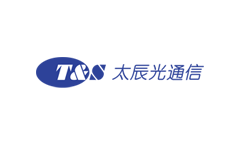How to Define the Three Value Standards of the End Face of the Patchcord?

The two end faces of the fiber must be precisely butted so that the light energy output by the transmitting fiber can be coupled to the receiving fiber to the maximum extent. The successful connection of optical fiber lines depends on the quality of the physical connection of the optical fibers. The two optical fiber end faces need to achieve sufficient physical contact, like a fused medium. Physical contact is essential to ensure low insertion loss and high return loss at the fiber connection point. The evolution of fiber end face shape has experienced three types of PC, UPC, and APC.
PC is physical contact. UPC is ultra-physical contact. APC (Angled Physical Contact) is called beveled physical contact, and the fiber end face is usually ground to an 8° bevel.
All end faces are ground into a spherical surface, and the end face curvature radius of UPC connectors is smaller than that of PC connectors, while the end faces of APC connectors are usually ground to an 8° bevel. The guaranteed return loss of PC, UPC, and APC three types of connectors is 40dB, 55dB, and 65dB respectively.
The end face of the optical fiber jumper needs to be ground into a spherical surface, but the product manufactured by the actual production process cannot be perfect. Therefore, the end face shape is specified in the technical standard, including the radius of curvature ROC, vertex offset, and fiber height.
1. Radius of curvature
End surface grinding with arc-shaped curvature radius. We have summarized the relevant technical standards given by the IEC organization, in which the ROC should take an appropriate value (10~25mm for PC type connectors, 5~15mm for APC type connectors), and if the ROC is too large, it cannot be under pressure. Sufficient deformation is generated to ensure physical contact between the fibers, and if the ROC is too small, the fibers will be easily crushed after repeated insertion and extraction.
2. Apex offset of fiber jumper
Refers to the offset between the vertex of the surface and the axis of the fiber, and the effect of the vertex offset on the physical contact between fibers. If the vertex offset is too large, the deformation of the end face is enough to make physical contact between the fibers, so the technical standard requires the vertex offset of the fiber jumper to be ≤50μm.
3. Fiber height of fiber jumper
It is worth noting that the height of the fiber end face relative to the ferrule end face, the fiber end face may protrude above the ferrule end face, or may be recessed below the ferrule end face.
A slightly smaller fiber recess will not affect the physical contact between the fibers, because the ferrule will deform to a certain extent under pressure; a slightly smaller fiber protrusion will not affect the physical contact between the fibers, because the fiber itself has a certain elasticity. Therefore, the range of the optical fiber height specified in the technical standard is -250~+250nm.
For technical and cost reasons, physical contact between fiber end faces is a core concept that enables low loss and high return loss.
The spherical end face helps to achieve physical contact, and the technical standard for the shape of the fiber end face is designed to ensure the physical contact conditions of the fiber optic connector in various harsh environments. The spherical end face is ground by a "soft" pad under a certain pressure. The hardness and pressure of the pad will affect the geometry of the end face. In addition, the roughness of the abrasive sheet needs to be considered. The optimal grinding parameters can be obtained by an orthogonal experimental design with multiple factors.
For APC-type connectors, more factors need to be considered. Errors in the grinding angle and azimuth errors of the positioning pins can significantly affect the apex offset of the connector. Therefore, the grinding disc needs to be precisely machined to ensure the accuracy of the bevel. The mechanical accuracy of other components other than ceramic ferrules also needs to be guaranteed. In addition, the pins on the connector and the corresponding slots in the adapter need to fit relatively tightly.
As a fiber optical accessories supplier, Communications takes a leading role in OEM and ODM service for optical fiber termination solutions. Based on T&S Communications’excellent comprehensive capabilities, we are dedicated to bringing fiber optical components with superior performance to the next-generation communications in a green, pragmatic, and cost-effective manner. Please feel free to contact us if you have any interest in related products.
- +1 Like
- Add to Favorites
Recommend
- Detailed Introduction of Fiber Jumper Interface Types PC, APC, UPC
- How to Distinguish MTP and MPO Fiber Jumpers?
- The Difference Between Armored Jumper and Ordinary Fiber Optic Jumper
- The First-generation IPEX Dual-head Jumper KH(RG1.13)-TX30-IPEX with Superior Electrical Performance and Reliable Transmission Capabilities
- LRJ Series Ultra Low Resistance Metal Alloy Jumper for Extremely Low Impedance and Profile Circuit Linkage
- CrimpFlex™ Jumper Cables Allow a Better Retention Compared to FFCs Used with ZIF/LIF Connectors
- Cleaning Fiber Optic Adapters is a Mandatory for Jumper Installers
- What Are the Components of Internet of Things?
This document is provided by Sekorm Platform for VIP exclusive service. The copyright is owned by Sekorm. Without authorization, any medias, websites or individual are not allowed to reprint. When authorizing the reprint, the link of www.sekorm.com must be indicated.

























































































































































































































































































































































































































































































































































































































































































































































































































